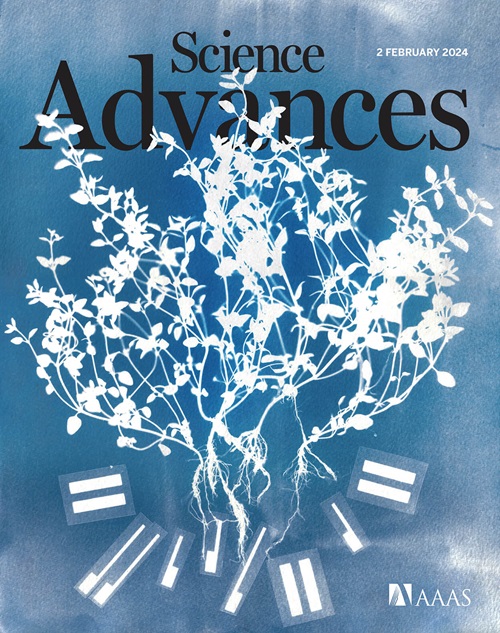人类 T 细胞受体识别 NRAS 癌症新抗原的结构特征和 AlphaFold 模型。
IF 11.7
1区 综合性期刊
Q1 MULTIDISCIPLINARY SCIENCES
引用次数: 0
摘要
识别癌症新抗原的 T 细胞受体(TCR)对抗癌免疫反应和免疫疗法非常重要。了解 TCR 识别新抗原的结构基础有助于深入了解其精湛的特异性,并有助于设计优化的 TCR。我们测定了人类 TCR 与 NRAS Q61K 和 Q61R 新抗原肽及 HLA-A1 主要组织相容性复合体 (MHC) 复合物的晶体结构,揭示了对野生型 NRAS 肽的双重识别和特异性的分子基础。鉴于这种方法在免疫识别方面的挑战,我们随后使用多个版本的 AlphaFold 对相应的复合物结构进行建模。AlphaFold2 (TCRmodel2)的一个实施方案采用了额外的采样,能够生成准确的复合物模型,而AlphaFold3也表现出了很强的性能,尽管对其他复合物的成功率较低。这项研究深入揭示了 TCR 对一种共有癌症新抗原的识别,以及使用 AlphaFold 建立 TCR 肽-MHC 复合物模型的实用性和实际注意事项。本文章由计算机程序翻译,如有差异,请以英文原文为准。

Structural characterization and AlphaFold modeling of human T cell receptor recognition of NRAS cancer neoantigens
T cell receptors (TCRs) that recognize cancer neoantigens are important for anticancer immune responses and immunotherapy. Understanding the structural basis of TCR recognition of neoantigens provides insights into their exquisite specificity and can enable design of optimized TCRs. We determined crystal structures of a human TCR in complex with NRAS Q61K and Q61R neoantigen peptides and HLA-A1 major histocompatibility complex (MHC), revealing the molecular underpinnings for dual recognition and specificity versus wild-type NRAS peptide. We then used multiple versions of AlphaFold to model the corresponding complex structures, given the challenge of immune recognition for such methods. One implementation of AlphaFold2 (TCRmodel2) with additional sampling was able to generate accurate models of the complexes, while AlphaFold3 also showed strong performance, although success was lower for other complexes. This study provides insights into TCR recognition of a shared cancer neoantigen as well as the utility and practical considerations for using AlphaFold to model TCR-peptide-MHC complexes.
求助全文
通过发布文献求助,成功后即可免费获取论文全文。
去求助
来源期刊

Science Advances
综合性期刊-综合性期刊
CiteScore
21.40
自引率
1.50%
发文量
1937
审稿时长
29 weeks
期刊介绍:
Science Advances, an open-access journal by AAAS, publishes impactful research in diverse scientific areas. It aims for fair, fast, and expert peer review, providing freely accessible research to readers. Led by distinguished scientists, the journal supports AAAS's mission by extending Science magazine's capacity to identify and promote significant advances. Evolving digital publishing technologies play a crucial role in advancing AAAS's global mission for science communication and benefitting humankind.
 求助内容:
求助内容: 应助结果提醒方式:
应助结果提醒方式:


